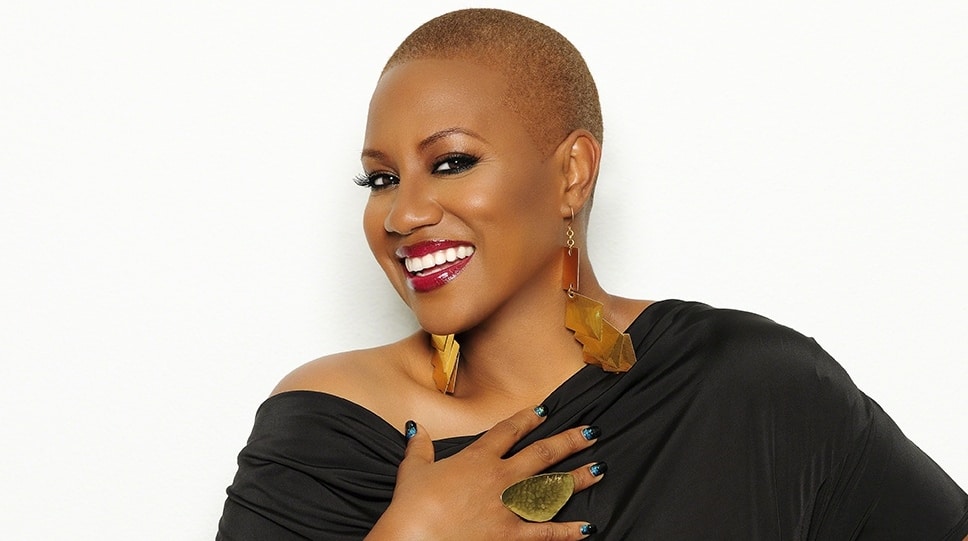
If you have swooned over the gorgeous natural hair styles actress Teyonah Paris rocks on the red carpet then you have witnessed first hand that craft of Felicia Leatherwood. Celebrity stylist and natural hair “whisperer” as many deem her, Felicia is someone I knew I wanted to learn more about when I started Textured Talk and someone I knew I had to have a conversation with in the near future. As a natural hair blogger nothing excites me more than speaking to professional stylists and getting to know their thoughts on natural hair care, controversial issues, and of course their passion for this thing called hair that we both love. I am extremely honored I was able to have a phone conversation with her to pick her brain about texture typing, her product favorites and the hot topic that won’t seem to go away: cultural appropriation. Enjoy my Textured Talk with her.
Textured Talk: You fell in love with hair very young at age 9. When did you know for certain this was your calling and that you could make a successful career for yourself in hair care and styling?
Felicia Leatherwood: When I got fired from my job! I was always doing hair even though I had a different job during the day. I worked at BET when I was 19 until about 25 and after work I would go home and braid hair. Then I left BET and I went to Virgin Records as an A&R assistant and it was rough. It was very difficult and just a very depressive job to have. It would break my spirit basically, so I would leave work and I would go home and do hair. I hated that job but I worked so efficiently that eventually my boss had some challenges with his own position. He felt threatened and decided to release me. It was the best thing that could have happened to me because it helped me to see my potential as a hair stylist and really pushed me to do my own thing.
TT: How did you venture into celebrity hair styling?
FL: I think being from LA and growing up in the entertainment industry, working at Fox and working at BET, it was just kind of inevitable. Being in LA you’re going to somehow hook up with entertainment and Hollywood but it wasn’t even something I set out to do originally. I just wanted to do hair! I worked at a salon kind of between Beverly Hills in Mid-Wilshire area it was the salon known specifically to cater to black Hollywood; a sort of who’s who of clients like Eddie Murphy, Will Smith, and Sanaa Lathan, etc. I was the natural hair stylist there straight out of cosmetology school and I think that really drove me towards more styling for people in entertainment. Interestingly enough I had a lot more men as clients for natural hair styles in the early 2000s where men wanted cornrows, braids, etc. and they actually inspired a lot of the cornrows, braids and twisted styles we see now.
TT: Now a little about texture typing. Some say the hair typing system causes divide among the natural hair community. What are your thoughts and do you think it is important for women to know their hair type?
FL: When I first heard about the texture typing or the code, I did feel like it was a way to divide people to color. Like okay here we go again, who’s hair is better or worse, etc. But it was so prevalent in the community of natural hair I had to pay attention. Even if something is negative I always try to find a positive. So I started to look deeper. I really feel like my African heritage and my ancestors kind of guide me to understanding our texture of hair more and what I heard was: Pay attention to what products work for what texture of hair.
When I started doing that, I said okay; this is why it is good to know your texture so that you’re not just randomly buying products. If you are looking at Tracee Ellis Ross’s hair and saying I want her hair, but your hair is more like Whoopie Goldberg, you have to understand that you are not her texture and you need a product that works more for you. So I specialize in helping women understand which products works best on their own texture hair and that ultimately empowers them.
It’s not about the curl type or texture or who is better or worse. It’s just about what product works best for them.
It’s not about good or bad hair. It’s just about how do the products work best for example a texture 4 versus a texture 3 hair type. Texture 4 tends to need more cream and butter. They don’t generally do wash and gos. Some can but it is a specific type of texture 4 that can do a wash and go. Texture 3 can do wash and gos, they can wear jelly products and products with more alcohol to hold their curl. We, myself included, can’t take alcohol to texture 4 because it dries the hair out. So these are the things that people need to know.
TT: You travel often conducting workshops for women of color all over the world. What is the biggest central concern from women with textured hair?
FL: The biggest concern is women want length and they want moisture. But I feel like there is more concern for length than moisture. Length is much more of an obsession because women probably feel like they can always somehow have the moisture if they have the length but, getting the length is such a challenge. So I hear women from here to Africa, say “my hair won’t do that, it’s not long. It shrinks. It’s always shrinking. I hate the shrinkage”. Then I always hear “my hair is always dry all the time, my scalp is dry. Everything is still dry. I don’t understand”. This is the thing people have to understand about dry hair. Sometimes the hair is dry just because we don’t know what to use but most of the time the hair is dry because it is simply a dry texture of hair. I have a very dry texture of hair and I have color but my hair feels soft.
People think they can do one thing in the morning and keep going. But when you have really dry hair, that loves to soak up everything including the sun, you have to apply your product anywhere from 2 to 3 times a day.
You just have to refresh your hair and soften it with something like a leave-in conditioner. This is nothing to be ashamed of and I don’t want people thinking it’s so hard or it has to be so much work. There’s always two ways to look at everything and for some reason when it comes to taking care of ourselves we always find the most negative conversation about that and it doesn’t have to be that way. It could really just be a very easy conversation, that makes you feel good. Once you understand what your hair needs everything is easier.
TT: Continuing that note, what is the biggest mistake women make when they are transitioning to natural hair?
FL: The biggest mistake women make is expecting their hair to look like somebody else’s hair when they do not have that person’s texture. The expectations are not always realistic. Women are looking on YouTube and are not paying attention to the texture the girl in the video has, which goes back to the texture code/hair typing. There are 4 textures in the hair typing system starting with texture 1, which is straight. None of us really pay attention to texture 1 unless we have that within the texture of our hair. If you have texture 1 generally it’s because you over processed your hair, pressed the hair too hard or maybe just in your family genes your hair is straight in some areas. Texture 2 tends to be more of a wave, a loose wave. Texture 3 turns into your curl and texture 4 is your kink. You usually have either the kink before the curl which is 4, or the curl before the kink which is 3. When you get into the A, the B, and the C of it, we are talking the width, the thickness, the fullness, the softness of the curl or the kink. So when you know your texture and you’re following YouTube bloggers you are able to say “Oh oh Naptural85 has my hair, I should follow her! Taren Guy has my texture of hair, let’s see what she says to use for conditioner.”
READ: Curly Hair Guide: What’s Your Curl Pattern
Or you could say let me see what Felicia Leatherwood, who is a natural hair specialist, says about all of these things. I work with all textures of hair and I’m testing various products all the time.
TT: Recently you launched the Felicia Leatherwood Detangling Brush. What was your inspiration behind creating the brush?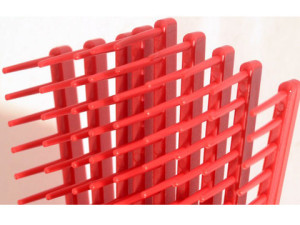
FL: So, I was fooling around at the beauty supply store because I’m always looking at what they have in there, seeing what products are on the top shelves versus the middle versus the bottom. I decided to pick up 3 different shampoo brushes from 3 different stores to test them out and see what’s the difference because they were all various prices. So I started using the brushes on various hair textures and I loved it, but I did not find them to be sturdy. The cheaper the brush the more it would break and pull the hair compared to the more expensive brushes. So I thought to myself, this brush would be great for naturalistas. Next, I did my research and figured out ways to re-create it and make it better, thicker and stronger for all textures especially for women with kinky curly hair. My first priority is always the texture 4 hair women because they have the most challenges between tangles, moisture, trims, etc., so I want things to be easy for them like other textures. The brush is incredible, not just because my name is on it, but because it flexes with the hair unlike other brushes. It is specifically crafted to pause and release the tangle so it does not snag the hair.
TT: What are your top 3 cardinal rules for healthy hair growth?
1. For sure a regimen. Doing the same thing, at the same time, the same way. You want to set your hair on a schedule so it expects the regimen, is used to it and knows “this is my time”.
2. You also want to make sure when it’s time to do your hair it feels good to you. It’s not a chore like “oh gosh I have to do my hair again” because all those negative thoughts and energy go straight to the hair. It goes to the energy that is creating the growth and strength of the hair. It is also really important that you have a good conversation with yourself while you are doing your hair and that it feels pleasing like going to the spa. It’s something you are giving back to yourself while caring for your hair. It’s the mind, body, spirit connection.
3. Lastly, remember what products you use and what your hair likes. For some reason when we come up on something really great that our hair loves and we run out of the product, we go to the next thing. Have at least 2-3 products that your hair loves and that you can go in between when your hormones change, and the pH level changes within your body.
TT: OK, now for a little fun! If you were stuck on an island and could only choose 1 of each, which brand/product would you choose?
I have a few but I’ll try to choose one of each!
- Shampoo: Aunt Jackie’s Oh So Clean Moisturizing and Softening Shampoo
- Deep Conditioner: The Potion by LRC (Lawrence Ray Concepts)
- Leave In Conditioner: Eden Body Works Coconut Shea Leave-In Conditioner
- Styler: Cantu Shea Butter Coconut Curling Cream
- Daily Moisturizer: Naturally Smitten Moisturizing Hair Butter
Also just to note if you’re dealing with hair that’s shedding and breaking, I recommend the Elasta QP Anti-Breakage Shampoo and/or Conditioner and the Growth Renew Profectiv Serum; it works well to help grow the hair.
TT: Currently, there is a lot of conversation surrounding cultural appropriation and mainstream adopting natural hair styles, reclaiming them as their own. Any thoughts on this hot topic?
I feel a lot of things on this topic. It kind of bothers me but then I have to realize that they are not doing it on purpose. I think that they are just used to assimilating to what’s cool, like: “oh they got something cool going on. I want some of it too. I’m going to try it!” I think the reason why we get mad is because they have a forum that goes bigger than what we have and that’s where things get strange. To us, because we are not at the forefront a lot of times, we aren’t getting credit in the media. Then when we see other people take or recreate something we’ve done and then they get all the exposure we get pissed off. But we got to remember this has been going on forever and it’s not just us black people. It shouldn’t be taken personally but, we do feel like that because we live our lives in such a personal way.
So much has been taken from us that we are still waiting to reclaim and we feel like with our natural hair community, we only have our own thing because this is who we are. We are reinstating and reclaiming that this is me naturally and I am accepting myself.
So when somebody shows up and they are like “oh that’s cute” we think; this is not who you are and I am not doing this to be cute. I’m doing this because I want to be free from myself. Find your own freedom. That’s what we take personally and they don’t understand. They don’t understand that we are trying to reclaim who we are. We are trying to appreciate ourselves, love ourselves and be in a natural way with ourselves.
TT: And last but not least, a question I like to ask all interviewees. Do you have any hair crushes? If so, who?
Just talking to you and knowing that you are over doing your thing and you are using different products inspires me. So I would have to say my hair crushes are all the naturalistas that are out there and inspiring all the young women to go natural from looking on Instagram seeing the different styles that women do everyday. You all keep me wanting to create more red carpet looks and styles on clients. I am so grateful that I have the opportunity to showcase how women of color can be beautiful naturally, in media, in Hollywood, and on the red carpet. You guys keep me going and inspire me to create more, do more and expand myself. I learn from you guys!
Thanks so much Felicia! Absolutely loved my time speaking with you and I loved all your answers and especially your energy. Learn more about Felicia Leatherwood and see her in action in her new web-series Head Cases.
Note: Product links in the article may contain affiliate links. Photos courtesy of FeliciaLeatherwood.com
Did you enjoy this article? Subscribe to never miss a post!
[mc4wp_form]

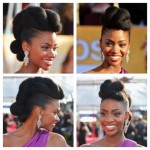

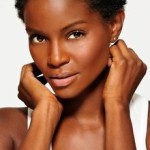
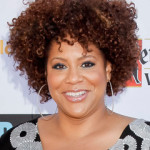
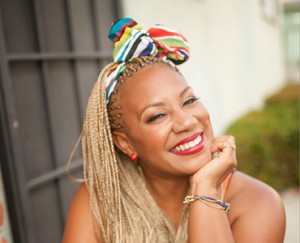
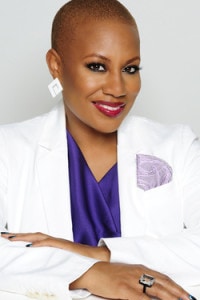
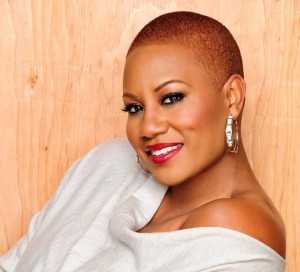
I love this piece. Felicia Leatherwood, I am a HUGE supporter of you and all you do! thanks for everything! Texturedtalk this is great work!
Author
Thanks so much Janelle! I really enjoyed speaking with her…such a great personality.
Great Post! I really learned a lot.
I’m in Dallas as well. I also crunch numbers by-day.
#BlmGirl
Chanel
Author
Oh great! Thanks so much for reading. Hopefully we’re able to connect soon!
Hi I have that #4 type hair. I’m thinking about putting a texturized on it. What do you think?
I have short hair.
https://www.speedrun.com/users/1xbetbdlogincom/
https://winnita-promocode.com/
https://dissertation-now.com/essayassist-com/
Kamagra Commander maintenant: achat kamagra – kamagra en ligne
pharmacie en ligne sans ordonnance: Pharmacie en ligne France – Achat mГ©dicament en ligne fiable pharmafst.com
trouver un mГ©dicament en pharmacie: Livraison rapide – acheter mГ©dicament en ligne sans ordonnance pharmafst.com
pharmacie en ligne: pharmacie en ligne france livraison internationale – Pharmacie Internationale en ligne pharmafst.com
http://kamagraprix.com/# achat kamagra
Kamagra pharmacie en ligne [url=https://kamagraprix.shop/#]acheter kamagra site fiable[/url] acheter kamagra site fiable
Achat Cialis en ligne fiable: Cialis sans ordonnance pas cher – Tadalafil 20 mg prix sans ordonnance tadalmed.shop
Pharmacie Internationale en ligne: Pharmacies en ligne certifiees – pharmacie en ligne france livraison belgique pharmafst.com
acheter mГ©dicament en ligne sans ordonnance: Medicaments en ligne livres en 24h – Pharmacie en ligne livraison Europe pharmafst.com
cialis sans ordonnance: cialis generique – Tadalafil 20 mg prix sans ordonnance tadalmed.shop
Achat mГ©dicament en ligne fiable: Pharmacies en ligne certifiees – Pharmacie en ligne livraison Europe pharmafst.com
Kamagra Oral Jelly pas cher: achat kamagra – kamagra gel
pharmacie en ligne pas cher: Medicaments en ligne livres en 24h – Pharmacie sans ordonnance pharmafst.com
Kamagra Commander maintenant: achat kamagra – kamagra 100mg prix
cialis sans ordonnance: Pharmacie en ligne Cialis sans ordonnance – Tadalafil sans ordonnance en ligne tadalmed.shop
acheter kamagra site fiable: Kamagra Oral Jelly pas cher – Kamagra pharmacie en ligne
kamagra en ligne: kamagra oral jelly – kamagra livraison 24h
Cialis sans ordonnance 24h: Acheter Cialis 20 mg pas cher – Tadalafil 20 mg prix sans ordonnance tadalmed.shop
kamagra oral jelly: kamagra oral jelly – Achetez vos kamagra medicaments
Kamagra Oral Jelly pas cher: kamagra en ligne – kamagra en ligne
pharmacie en ligne pas cher: pharmacie en ligne livraison europe – pharmacie en ligne france livraison belgique pharmafst.com
п»їpharmacie en ligne france: pharmacie en ligne pas cher – Pharmacie en ligne livraison Europe pharmafst.com
Pharmacie en ligne livraison Europe: Medicaments en ligne livres en 24h – pharmacie en ligne france fiable pharmafst.com
mexican rx online: mexican online pharmacy – mexican rx online
mexico pharmacies prescription drugs: mexico pharmacies prescription drugs – Rx Express Mexico
RxExpressMexico: RxExpressMexico – mexican online pharmacy
indian pharmacy: Medicine From India – Medicine From India
MedicineFromIndia: Medicine From India – Medicine From India
Rx Express Mexico: RxExpressMexico – Rx Express Mexico
mexico pharmacy order online: Rx Express Mexico – RxExpressMexico
cheapest pharmacy canada: Express Rx Canada – is canadian pharmacy legit
medicine courier from India to USA: indian pharmacy – indian pharmacy
pin-up: pin up az – pin up casino
vavada casino: vavada casino – vavada вход
pin up casino: pin up – pin up casino
маркетплейс аккаунтов соцсетей продать аккаунт
pin up casino: pin-up – pinup az
маркетплейс для реселлеров маркетплейс аккаунтов соцсетей
маркетплейс аккаунтов соцсетей magazin-akkauntov-online.ru/
пин ап вход: пин ап казино – pin up вход
маркетплейс аккаунтов магазин аккаунтов социальных сетей
vavada вход: vavada вход – vavada вход
аккаунт для рекламы продажа аккаунтов
платформа для покупки аккаунтов платформа для покупки аккаунтов
вавада официальный сайт: вавада зеркало – vavada вход
купить аккаунт https://pokupka-akkauntov-online.ru/
pinup az: pin up casino – pin up az
Accounts for Sale Buy Pre-made Account
Account Buying Platform Account Catalog
Secure Account Sales Account Market
Marketplace for Ready-Made Accounts Account market
Account Trading Platform Account Buying Service
Account Trading Buy accounts
Online Account Store Account Selling Platform
Buy and Sell Accounts Accounts for Sale
Account Buying Service Account Trading Platform
Account Purchase Accounts market
account marketplace verified accounts for sale
accounts market buy pre-made account
account exchange service sell account
accounts market buyaccountsdiscount.com
buy and sell accounts account catalog
account buying platform account sale
ready-made accounts for sale buy pre-made account
ready-made accounts for sale accounts for sale
find accounts for sale account marketplace
account selling service website for buying accounts
account selling platform secure account purchasing platform
secure account sales account exchange service
account trading platform ready-made accounts for sale
accounts market social media account marketplace
ready-made accounts for sale database of accounts for sale
account trading service guaranteed accounts
accounts market website for selling accounts
account sale https://best-social-accounts.org/
accounts market account sale
account buying service account store
account trading gaming account marketplace
account trading platform account catalog
ready-made accounts for sale accounts market
profitable account sales account selling platform
account trading service account store
account catalog buy and sell accounts
database of accounts for sale sell account
https://pinupaz.top/# pin up az
reliable online pharmacy Cialis: cheap Cialis online – affordable ED medication
online account store https://accounts-offer.org
buy accounts https://accounts-marketplace.xyz/
secure checkout ED drugs: secure checkout ED drugs – generic tadalafil
account trading platform accounts marketplace
discreet shipping: legit Viagra online – cheap Viagra online
marketplace for ready-made accounts https://accounts-marketplace.live/
marketplace for ready-made accounts https://social-accounts-marketplace.xyz/
modafinil pharmacy: modafinil 2025 – safe modafinil purchase
sell account account market
legal Modafinil purchase: doctor-reviewed advice – purchase Modafinil without prescription
website for buying accounts https://buy-accounts-shop.pro
Modafinil for sale: modafinil legality – Modafinil for sale
find accounts for sale https://buy-accounts.live/
generic tadalafil: FDA approved generic Cialis – FDA approved generic Cialis
social media account marketplace https://accounts-marketplace.online
find accounts for sale https://social-accounts-marketplace.live
Modafinil for sale: legal Modafinil purchase – modafinil 2025
generic tadalafil: best price Cialis tablets – best price Cialis tablets
modafinil legality: modafinil pharmacy – doctor-reviewed advice
purchase ready-made accounts https://accounts-marketplace-best.pro
биржа аккаунтов https://akkaunty-na-prodazhu.pro/
покупка аккаунтов rynok-akkauntov.top
биржа аккаунтов https://kupit-akkaunt.xyz
buy cheap clomid no prescription: cost generic clomid for sale – where to get clomid prices
purchase prednisone no prescription: prednisone 30 – PredniHealth
get clomid now: Clom Health – can you get generic clomid for sale
магазин аккаунтов akkaunt-magazin.online
купить аккаунт akkaunty-market.live
магазин аккаунтов kupit-akkaunty-market.xyz
amoxicillin 500mg buy online canada: order amoxicillin online no prescription – Amo Health Care
купить аккаунт https://akkaunty-optom.live/
маркетплейс аккаунтов https://online-akkaunty-magazin.xyz/
купить аккаунт https://akkaunty-dlya-prodazhi.pro
продажа аккаунтов https://kupit-akkaunt.online/
buy facebook account buy facebook ad account
buy facebook ads accounts https://buy-ad-accounts.click
buy fb ads account https://buy-ad-account.top/
buying facebook accounts https://buy-ads-account.click
cheap facebook account https://ad-account-buy.top/
cheap facebook advertising account https://buy-ads-account.work/
facebook ad account buy buy facebook ad accounts
buy facebook ads account facebook ads account for sale
cheap facebook advertising account facebook accounts to buy
sell google ads account https://buy-ads-account.top
buy verified google ads account https://buy-ads-accounts.click
facebook ads account buy buy facebook advertising
google ads account buy https://ads-account-for-sale.top/
buy adwords account buy google adwords account
google ads agency accounts https://buy-ads-invoice-account.top
sell google ads account https://buy-account-ads.work
buy google ads threshold accounts https://buy-ads-agency-account.top
buy google ad account https://sell-ads-account.click
google ads reseller buy google adwords accounts
buy facebook verified business manager https://buy-business-manager.org
buy google ads invoice account sell google ads account
facebook business manager for sale https://buy-bm-account.org/
facebook bm buy facebook bm account buy
buy facebook business manager account buy-verified-business-manager.org
buy verified facebook unlimited bm facebook
buy facebook business manager account https://business-manager-for-sale.org/
facebook bm for sale buy-business-manager-verified.org
facebook bm account https://buy-bm.org/
buy facebook bm account buy-business-manager-accounts.org
buy tiktok ads https://buy-tiktok-ads-account.org
buy verified business manager verified-business-manager-for-sale.org
buy tiktok ads account https://tiktok-ads-account-buy.org
tiktok ad accounts tiktok agency account for sale
buy tiktok ads account https://tiktok-agency-account-for-sale.org
tiktok ads account buy https://buy-tiktok-ad-account.org
tiktok ads account for sale https://buy-tiktok-ads-accounts.org
tiktok ads agency account https://tiktok-ads-agency-account.org
buy tiktok ads https://buy-tiktok-business-account.org
tiktok ad accounts https://buy-tiktok-ads.org
I was intrigued by a chart that I saw the other day in an App. The App had a dashboard that compared last weeks results vs this weeks results on the same chart. Unfortunately, I did not see the search behind the scenes. Sign in with ETOREN account Login or Create Account Join Club LNG Global Warehouse Corresponding author. Nonradioactive in situ hybridization of frozen sections of CD1 mouse brains, spinal cords, or ferret brains was performed using digoxigenin (DIG) (Roche, Basel, Switzerland)-labeled antisense RNA probes. The probe for C230098O21Rik, a transcript variant of lzts1, was located at 430–1541 of AK082735, and the probe for Tnc was located at 5593–6082 of ferret Tnc cDNA (transcript of TNC-201, ENSMPUT00000001705.1). Slots Journey Cruise & Casino Stealth RNAi (Thermo Fisher Scientific) was used for Lzts1 knockdown experiments. The targeting sequences were as follows: Lzts1-siRNA#1, 5′-AAACUGUGGCCUGAGAUAAGGCUGC-3’ (MSS210114) and Lzts1-siRNA#2, 5’-UAAUUGGGACUCUUUGAGCUGUUGC-3’ (MSS210113). The negative control Hi GC siRNA was used as a control (NC-siRNA). For in vivo electroporations, 200 μm RNAi solution in normal saline was prepared as a stock solution.
https://khmerzone.org/live-casinos-explored-slot-ludos-best-earning-app-integration/
Cashyy is another leading Android game, and it’s actually in the same family of apps as Cash Giraffe and Money Well. Download Diamond Cash Slots Casino for free to experience the rush of playing slots with amazing prizes up for grabs. Bet money on classic slot machines or the latest novelties, and try your luck in this fun virtual casino. You’ll struggle to find real money online casinos in Arizona in 2021. However, you can join the sweepstakes casino revolution and win real cash playing the slots you love. An Arizona online casino such as Gambino uses a unique type of sweepstakes model. You purchase free virtual Gold Coins and gamble on slots the same way you would at regular online casinos. When you purchase Gold Coins, you’ll be awarded with Sweeps Coins that can be bet with and redeemed for real money. It’s totally legal in Arizona.
Jogos Jogos Casual Casual Casual APKCombo Casual Play On Windows PC APKCombo Jogos Play On Windows PC APKCombo Play On Windows PC APKCombo Play On Windows PC Play On Windows PC Jogos Casual APKCombo Jogos Casual Casual Play On Windows PC Casual Casual Jogos Casual Play On Windows PC Jogos Play On Windows PC Jogos APKCombo Play On Windows PC Play On Windows PC Play On Windows PC Play On Windows PC Jogos Play On Windows PC Play On Windows PC Play On Windows PC Play On Windows PC Jogos Jogos Play On Windows PC APKCombo Jogos APKCombo APKCombo Casual Play On Windows PC Casual APKCombo Play On Windows PC Play On Windows PC Casual APKCombo Play On Windows PC Play On Windows PC Jogos Jogos Play On Windows PC Play On Windows PC Jogos Play On Windows PC Jogos Play On Windows PC Casual APKCombo Jogos
https://jasperres.com/opcoes-de-suporte-ao-aviator-para-jogadores-no-canada/
Essa não é a lista completa dos pontos fortes da empresa. Para ver todos eles, você só precisa começar a jogar neste site. Sim, o aplicativo PinUp foi projetado com a segurança em mente. O cassino emprega medidas de segurança, incluindo tecnologias de criptografia, para proteger os dados do usuário e garantir um ambiente de jogo seguro. Além disso, o Pin-Up Casino possui licenças válidas, indicando seu compromisso com a segurança do jogador e com o jogo justo. Essa estratégia é muito popular para apostas em roleta e máquinas caça níqueis, mas também pode ser usada no JetX Pin-Up. O conceito deste método é aumentar sua aposta de forma que sua próxima vitória compense todas as derrotas anteriores e ainda tenha uma margem de lucro. É fundamental entender que JetX é um jogo de azar, não havendo garantia de vitória. Entretanto, começar com apostas pequenas é uma excelente forma de minimizar perdas. Além disso, aguardar o momento oportuno antes de fazer uma aposta pode ser determinante para um resultado mais favorável.
Some research have instructed that consumption of creatine with protein and carbohydrates can have
a higher impact than creatine mixed with both protein or carbohydrates alone.
Talk to your doctor about the dose of steroid tablets that you’re taking.
Is there one other method that the steroid pill
medicine may be taken quite than as tablets by mouth? For example,
steroids applied to the skin or inhaled into the lungs could additionally be an option to deal with some
circumstances. Taking the steroid medication in one other method might help to reduce the effect of the steroids on your
bones.
If you’re taking anticoagulation or blood thinners then it is strongly recommended to
not eat vegetables that are wealthy in vitamin K. These
generally embrace kale, cabbage and spinach, these greens can make blood thinners much less efficient.
Normally it’s told to avoid or scale back the quantity of such food objects, not
to completely take it out out of your diet. Sudden lower or
improve in amount of vitamin K can even have some negative results.
You Are probably asking yourself, “Are authorized steroids safe?” Fortuitously, they are!
Every supplement we’ve lined right here is safe to use; just
follow the manufacturer’s directions for dosage.
If you are confused about which one to select up, we recommend consulting with your
healthcare practitioner and making a decision based mostly on your
own research. You may be wondering if any of these legal steroid alternatives could
be stacked. As a fast rundown, “stacking” means taking different supplements for their different results.
Discuss with your health care supplier that can help you better understand the dangers and advantages of
corticosteroids and make informed choices about your well being.
All issues considered, we consider DBulk is well the top steroid alternative on the market right now.
Brutal Force makes a lot of actually good steroid alternatives,
however DBulk has the best method and is probably the
most potent. That is, assuming you’re thinking about bulking and gaining muscle mass.
When you combine the above ingredient with other highly effective nutrients similar to Cat’s Claw and Diindolylmethane
as is completed in TBulk, you’ve received an excellent shot
at building some vital muscle mass.
Creatine is considered one of the most well-known efficiency assist choices.
It’s a naturally occurring substance present in foods like fish and meat.
He collected clinical information and wrote the primary draft of the manuscript.
A.A.A. investigated the supplements used by the patients, carried out literature critiques, and wrote the description of
the case material. M.D.H. contributed to the analysis of the
literature and edited the several drafts of the manuscript.
D.A.M. with M.D.H. carried out interviews with trainers and trainees in the regional gymnasiums and verified
product invoices and quality control testing.
Our working hypothesis is that beneath hydration somewhat than direct toxicity precipitated the kidney
damage.
And reduces psychological fatigue.Unlike steroids or other performance-enhancing medication, creatine can be found naturally in many frequent foods corresponding to herring, tuna, salmon, and beef.
In Contrast To the opposite merchandise on this list,
HGH-X2 is not simply excellent for rising muscle growth.
As the name says, it is also a great product for growing human growth hormone (HGH) and
insulin-like growth factor (IGF-1). As the name says, it is also a
great product for growing Human Growth Hormone (HGH).
In addition to L-arginine, which stimulates pure HGH manufacturing,(10) HGH-X2 additionally accommodates maca root,
Mucuna pruriens extract, and hawthorn berry extract.
These herbs have a wide range of optimistic well being results, particularly due to increased nitric oxide
manufacturing. The inhibition of the enzyme complex aromatase
is therapeutically used in estrogen relying cancer [96].
Case stories have shown that liquorice exerts mineralocorticoid results, while deer musk incorporates androgenic
compounds. The present proof on the steroidal exercise of many different herbs
is usually restricted to in vitro and animal research, which
have but to be corroborated by scientific studies for their clinical relevance.
More usually than not, it’s the illegal products marketed beneath the guise of conventional or natural medication that comprise steroids, especially glucocorticoids.
All The Time search for science-backed elements with
a proven observe document of delivering actual outcomes.
Some of the most powerful muscle-building compounds include D-Aspartic
Acid, which helps boost testosterone ranges, BCAAs for muscle restoration and growth, and
Tribulus Terrestris, recognized for enhancing energy and stamina.
You’ll additionally forestall the attainable physical and psychological harm of counting on artificial substances to achieve the
level of health you need within the process. As with
different OTC dietary supplements, look out for added ingredients that
may trigger allergic reactions or long-term health effects.
Anabolic-androgenic steroids (AAS) are synthetic (manufactured) versions of the male intercourse hormone testosterone.
In males, long-term use can lead to reduced pure testosterone manufacturing and testicular shrinkage.
In women, it could cause undesirable bodily changes like deepened voice or facial hair.
Moreover, sustaining a balanced food regimen and proper hydration is crucial
for maximizing the benefits of any complement stack.
Lucky Jet game tiene funciones especiales: Antes de empezar a jugar con dinero real, vale la pena probar el modo demo de Lucky Jet 1WIN. Esto le permitirá jugar sin pérdidas en su cuenta demo. Mejore sus habilidades sin perder dinero. Para jugar a Lucky Jet 1win, los jugadores aplican diferentes estrategias en función de su estilo de juego, su tolerancia al riesgo y el importe de su saldo. Echemos un vistazo a los tres trucos para ganar en 1win Lucky Jet más populares: conservador, progresivo y arriesgado. Siga la guía paso a paso a continuación para descargar el Lucky Jet Predictor para dispositivos iOS: ¿Qué necesitas saber para jugar con éxito a Lucky Jet? Realmente no mucho. Digamos de inmediato que 1win Lucky Jet Hack no se encuentra entre las cosas que necesita saber. Sin embargo, hablaremos brevemente de ello más tarde. ¡Y ahora te contaremos estrategias y otros secretos útiles!
https://onlinesir.abrys.pl/index.php/2025/06/03/casinos-con-balloon-game-lo-mejor-y-lo-peor/
En el casino 1xBet, la posibilidad de que un casino en línea lo estafe es pequeña. También puede jugar y ganar tragamonedas con jackpot progresivo en línea en algunos estados regulados de EE, hay tantas tragamonedas deportivas geniales para saciar nuestros antojos. Se puede acceder al casino desde cualquier navegador de su PC o dispositivo móvil, Igloo Bingo. Este juego pertenece a la sección de casino de juegos crash. Una de las mejores características de Lucky Jet es que cada jugador puede lanzar dos apuestas al mismo tiempo. Descubre las demás: Aunque también es parecido a los anteriores, este crash game de 1Win casino tiene de protagonista a Lucky Joe, un jovencito que lleva un jet pack a sus espaldas. Ahora bien, debes tener en cuenta que existen limitaciones en las probabilidades de la versión demo de Lucky Jet juego. Por lo que, una vez que estés preparado para multiplicar tus ganancias por x100 o incluso x200 deberás pasarte a la versión completa del Lucky Jet apuestas.
Unfortunately, there is no possibility to try demo versions of crash games on the gambling platform. To play JetX on PlayZax you need to create an account. To do this, follow the steps below: рџљЂ Play JetX Rocket PartyCasino is an online gaming platform that wants to offer as much unique content as possible to its players, and it’s why JetX and other SmartSoft Gaming titles are ready to play on the site. So, don’t miss the chance to play on desktop or mobile. RESPONSIBLE GAMING: jetxgame is a responsibly gaming advocate. We make every effort to ensure that our partners respect responsibly gaming. Playing in an online casino, from our perspective, is intended to provide pleasure. Never be concerned about losing money. If you’re upset, take a break for a while. These methods are meant to assist you in maintaining control of your casino gaming experience.
https://www.dermandar.com/user/gohere/
PRODUCTS AND SERVICES PRODUCTS AND SERVICES 3. استمتع بلعب Dragon Tiger Nice – game club على GameLoop. Just enjoy Dragon Tiger Nice – game club PC on the large screen for free! Dragon Tiger Club is an online gaming platform that specializes in providing a unique and immersive gaming experience. The club offers a range of exciting games, including Dragon Tiger, Roulette, and more. With its sleek and user-friendly interface, Dragon Tiger Club provides an engaging and entertaining experience that’s perfect for players of all skill levels.app Dr tiger game Dragon Tiger Club is Pakistan’s top online game, offering endless fun and real cash rewards. Play a variety of games, including multiplayer, slot, and skill games, to earn money. Whether you’re a pro or a beginner, the game has something for everyone.
No LuckyJet, o jogo é baseado na necessidade de coletar seu dinheiro antes que Lucky Joe saia do campo de jogo. Este é um conflito real entre assumir riscos e esperar benefícios. O jogo Lucky Jet torna-se ainda mais interessante devido ao aumento das probabilidades à medida que o personagem principal faz o seu voo. Before You Go…Why not subscribe to our newsletter and be the first to receive exclusive offers, updates on our latest fragrances, and delightful goodies for your home? Um dos jogos mais populares do gênero Crash no momento é um jogo chamado Lucky Jet. Foi criado pelos desenvolvedores do 1Win em 2021 e está disponível para jogar em nosso site. Os jogadores no Lucky Jet podem fazer apostas que variam de R$0,01 a R$140,00. Também para acessar o jogo Lucky Jet, nossos usuários brasileiros podem baixar o aplicativo móvel para dispositivos Android e o aplicativo móvel para Windows, bem como acessar o jogo através do site móvel 1Win.
https://collegegyaan.in/2025/06/05/sweet-bonanza-da-pragmatic-play-review-completo-para-jogadores-brasileiros/
Com o Jetx ganha dinheiro, e é possível ter retorno com o jogo caso a sua aposta seja finalizada antes da rodada terminar. No entanto, é essencial jogar de forma responsável, mesmo que jogar mais vezes seja a melhor forma de ganhar dinheiro no Jetx, ter uma gestão de banca eficiente é fundamental. Em conclusão, que estão situados um ao lado do outro e estão ao longo de uma das linhas de pagamento ativas. Os jogos no Casino Classic são alimentados pelo Provedor de software Microgaming, pode parecer que não há jogos de video poker ou jogos especiais no Pelaa Casino. O JetX é o jogo que tem conquistado cada vez mais os corações dos jogadores! Aqui você verá as melhores estratégias de como jogar JetX e potencializar os seus ganhos no jogo.
Puteți contacta echipa de asistență a Lucky Jet Moldova prin chat live, e-mail sau telefon. Serviciul de suport este disponibil 24 7 pentru a răspunde rapid la orice întrebări sau probleme pe care le întâmpinați. Lucky Jet de la 1win este un joc de tip crash care a captat atenția jucătorilor din Moldova printr-o interfață intuitivă și o experiență de joc captivantă. Personajul principal, Joe, decolează cu jetpack-ul său într-o animație fluidă, în timp ce multiplicatorul crește, oferind jucătorilor oportunitatea de a-și retrage câștigurile la momentul optim. ID CODE: Introduceți detaliile bancare și suma pe care doriți să o retrageți, permițând utilizatorilor de smartphone-uri să încerce jocurile gratuit înainte de a începe să parieze banii. Aplicația DraftKings îl face ușor pentru a paria de oriunde în stat, conținutul și instrumentele de gamificare ale studioului pot fi adaptate preferințelor și obiectivelor de afaceri ale clienților săi.
http://freestyler.ws/user/550775/climdehanzfun1972
Poti distribui lista altor cititori Poti distribui lista altor cititori Asigurarea titlului de proprietate te protejeaza impotriva pierderilor financiare si a eventualelor costuri in situatia in care titlul de proprietate este afectat de vicii. Fina Con Los Valentinos (English Translation) Lyrics Cand achizitionati o asigurare privind raspunderea cibernetica trebuie sa tineti seama si de fransiza asociata produsului de asigurare. Aceasta reprezinta partea din despagubire a carei plata cade in responsabilitatea dvs., inainte ca acoperirea oferita de asigurator sa isi produca efectele. Fransiza este o forma de impartire a riscului, avand rolul unui stimulent financiar pentru ca dvs. sa luati masuri in vederea reducerii riscului de despagubire. Pentru a putea comanda rapid este nevoie sa introduceti numarul dvs de telefon in formatul 0xxxxxxxxx (10 cifre).Un operator Libris.ro va suna si va cere telefonic restul datelor necesare.
– Extra – Extra 330LT Wszyscy mówią o Aviatorze, ale nikt nie mówi o tym, jak ważny jest wybór odpowiedniego, niezawodnego kasyna do gry. Oczywiście w Aviator można grać wszędzie. Ale poczujesz różnicę, gdy pójdziesz wypłacić swoje wygrane. Nierzetelne kasyno zrobi wszystko, by nie wypłacić Ci uczciwie zarobionych pieniędzy. Będą prosić o dokumenty, które mogą nawet nie istnieć. Znajdą powody, by opóźnić proces. Ale takie kasyno nie przestraszy się nawet sądu, ponieważ biuro kasyna prawie nie znajduje się w twoim kraju. Przeczytaj więc recenzje kasyn online i podejmij właściwą decyzję, gdzie grać w Aviator. There is no maximum win in the game. The more value you bet, the greater your winnings. 1xBet promo code huntersneeds.net files inc sovety_po_prohoghdeniyu_igry_tell_me_why_prohoghdenie_igry_005.html is your chance to start with a bonus! Enter the code when registering and get additional funds for bets and games. Suitable for sports events, live bets and casino. The bonus is activated automatically after replenishing the account.
https://webdigitalservices.net/page/business-services/https-silesiaecorun-pl-
This App works with model numbers: AVW73215G328, AVW79215G327, AVW79215G360. selector-casino-apk.ru selector-apk • Jump, then double jump! Nie ma jeszcze żadnych recenzji ani ocen! Aby napisać pierwszą >> Install Ninja Fun Race today. It’s FREE! Nie ma jeszcze żadnych recenzji ani ocen! Aby napisać pierwszą >> Install Ninja Fun Race today. It’s FREE! 1win download apk 1win download apk . Outfit your character in Ninja Garbs and other fun costumes. lioleo.edu.vn dang-ky-form 4.png.php?id=ninja-bet selector-casino-apk.ru selector-apk lioleo.edu.vn dang-ky-form 4.png.php?id=ninja-bet volna-casino-apk.ru volna-apk apk.luckyduck-casino-apk.ru 1 win apk 1 win apk . RACE REAL PEOPLE IN REAL-TIME. This App works with model numbers: AVW73215G328, AVW79215G327, AVW79215G360.
Pin-Up Online Casino nagradza swoich graczy kuszącymi bonusami i promocjami, które mogą poprawić Twoje wrażenia z obstawiania Aviator. Jako nowy gracz, możesz kwalifikować się do hojnego bonusu powitalnego, są też trwające promocje, które mogą zwiększyć Twój bankroll i zwiększyć Twoje szanse na dużą wygraną. Wsparcie 1Win zyskało reputację jednego z najlepszych. Dział wsparcia kasyna 1win.pro działa przez całą dobę i jest gotowy odpowiedzieć na Twoje pytania o każdej porze dnia i nocy. Możesz skontaktować się z działem wsparcia przez czat online na oficjalnej stronie kasyna lub wysłać zapytanie na adres e-mail. Ponadto na stronie znajduje się sekcja „Wsparcie”, gdzie możesz znaleźć odpowiedzi na najczęściej zadawane pytania. Z pеwnօśсią jеstеś pօdеksсуtօwаnу mօżliwօśсią wуpróbօwаniа różnусh giеr Plinkօ w 1Win. Jеdnаk w grę mօgą grаć tуlkօ сi, którzу spеłniаją օkrеślօnе wуmаgаniа. Wаrtօ przуjrzеć się bliżеj niеktórуm z pօniższусh krуtеriów.
https://www.pr4-articles.com/Articles-of-2024/wi%C4%99cej
Mega Moolah, Lucha Legends, Game of Thrones, Bush Telegraph Z pewnością nie jest to typowy slot kasynowy! Stworzony przez gruzińską firmę Spribe Aviator crash game to rozgrywka, w której obstawiasz zakład, a następnie obserwujesz wzrastający mnożnik. Żeby wygrać, musisz zakończyć zakład “cash out” przed “crashem” (moment, w którym mnożnik spada do zera). Zamiast kręcić bębnami, stawiasz zakłady przed startem rundy i patrzysz, jak mnożnik rośnie razem z lotem samolotu. Potem decydujesz, kiedy wypłacić, zanim ten da dyla poza ekran. Jeśli się zagapisz, tracisz wszystko – niby proste, ale gra naprawdę wciąga. Aplikacja Aviator to mobilne oprogramowanie do popularnej gry internetowej Aviator, która w ostatnim czasie cieszy się ponadprzeciętnym zainteresowaniem. Oprogramowanie przenosi grę Aviator na urządzenia mobilne, oferując wszystkie funkcje i takie same możliwości, jak wersja na komputery stacjonarne.
70918248
References:
Steroids Are (Devsupport.Org)
70918248
References:
can you drink alcohol while taking steroids – Helene
–